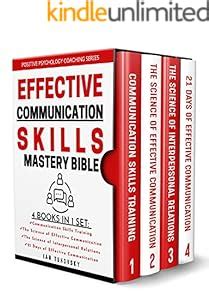Effective communication is essential in both personal and professional settings, enabling us to convey ideas, build relationships, and resolve conflicts. Mastering communication competence—the ability to effectively and appropriately communicate in diverse situations—requires understanding its key components. From honing verbal communication skills to recognizing the power of non-verbal cues, becoming a skilled communicator involves a combination of knowledge, practice, and self-awareness. In this article, we will explore the fundamental aspects of communication competence, examine techniques to enhance your skills, and provide practical exercises to help you overcome common barriers. By developing these skills, you can improve your ability to engage in meaningful and productive dialogue.
Join rosawblog.com as we uncover the details of this topic.
1. Understanding the Components of Communication Competence
Communication competence is the ability to interact effectively and appropriately in various contexts. It involves a combination of knowledge, skills, and attitudes that enable an individual to convey messages clearly and understand others accurately. The key components of communication competence include linguistic competence, sociolinguistic competence, discourse competence, and strategic competence.
Linguistic competence refers to the mastery of language rules, such as grammar and vocabulary, ensuring that messages are clear and coherent. Sociolinguistic competence involves understanding the social context in which communication occurs, including cultural norms, roles, and relationships. This allows for appropriate adjustments in communication style based on the audience and setting. Discourse competence is the ability to connect sentences and ideas logically, creating a cohesive and meaningful message. Finally, strategic competence involves the use of strategies to overcome communication barriers, such as clarifying misunderstandings or rephrasing for better understanding.
Developing communication competence requires not only mastering these components but also cultivating self-awareness and empathy. By recognizing your strengths and areas for improvement, you can adapt your communication style to various situations and audiences. Understanding these components forms the foundation for enhancing your overall communication skills, allowing you to engage in more effective and meaningful dialogue across different settings.

2. Techniques for Improving Verbal Communication Skills
Improving verbal communication skills is essential for clear and effective interactions. One key technique is active listening, which involves fully concentrating on the speaker, understanding their message, and responding thoughtfully. This not only shows respect but also ensures that the conversation flows smoothly. Another important technique is clarity in speech, where you articulate your thoughts clearly and avoid ambiguous language. Using simple, direct sentences helps prevent misunderstandings and makes your message more impactful.
Building a strong vocabulary is also crucial. Expanding your word choice allows you to express ideas more precisely and persuasively. Additionally, being mindful of your tone and pace can enhance your verbal communication. A well-modulated tone conveys confidence, while an appropriate pace ensures that your message is easily understood.
Asking open-ended questions is another effective method to engage others and encourage deeper conversations. These questions invite more detailed responses, fostering a richer exchange of ideas. Lastly, practice makes perfect. Regularly engaging in conversations, whether in professional or casual settings, helps you refine these techniques and build confidence in your verbal communication abilities. By focusing on these strategies, you can significantly enhance your competence in verbal communication.

3. The Role of Non-Verbal Cues in Effective Communication
Non-verbal cues play a critical role in effective communication, often conveying more meaning than words alone. These cues include facial expressions, gestures, posture, eye contact, and tone of voice, all of which contribute to how messages are received and interpreted.
Facial expressions are one of the most powerful non-verbal tools. A smile can indicate friendliness and openness, while a furrowed brow might suggest confusion or concern. Being aware of your facial expressions and reading those of others can greatly enhance understanding in communication.
Gestures, such as nodding in agreement or using hand movements to emphasize a point, also contribute to the clarity and emphasis of your message. However, it’s important to use gestures that are appropriate to the cultural context, as their meanings can vary widely.
Posture and eye contact are equally significant. An open posture, with uncrossed arms and a straight back, signals that you are approachable and engaged. Eye contact shows attentiveness and sincerity, fostering trust between communicators. However, too much or too little eye contact can be misinterpreted, so finding the right balance is key.
Lastly, tone of voice can convey emotions like excitement, frustration, or empathy, adding depth to verbal communication. By consciously using and interpreting these non-verbal cues, you can enhance the effectiveness of your communication, making your interactions more meaningful and impactful.

rosawblog.com
